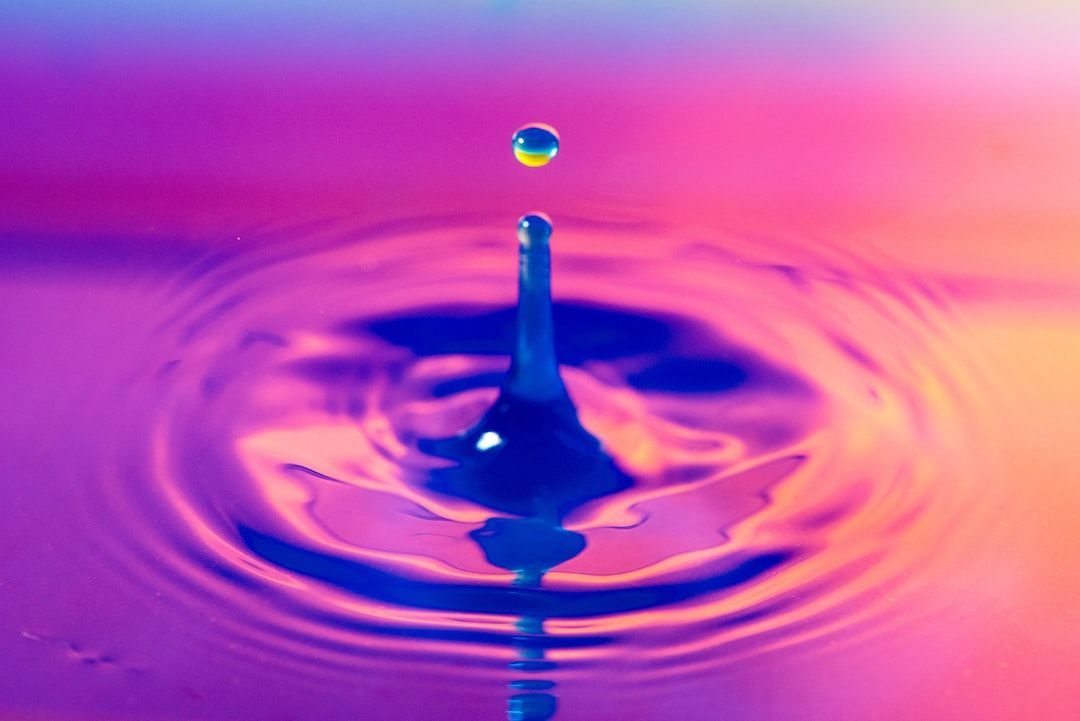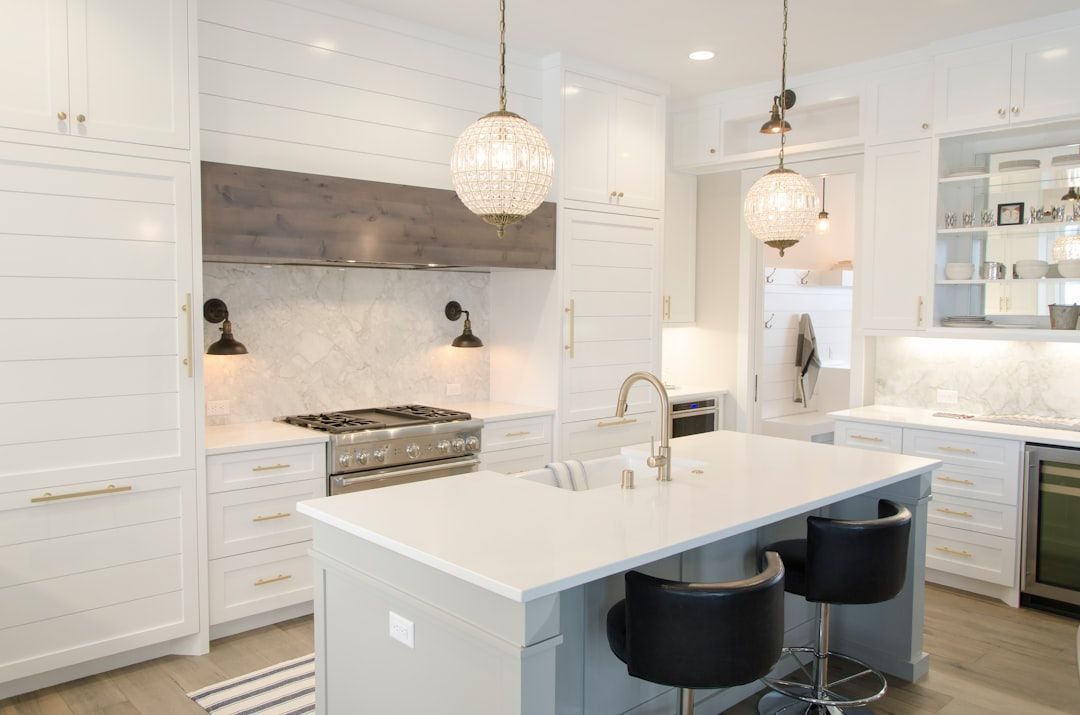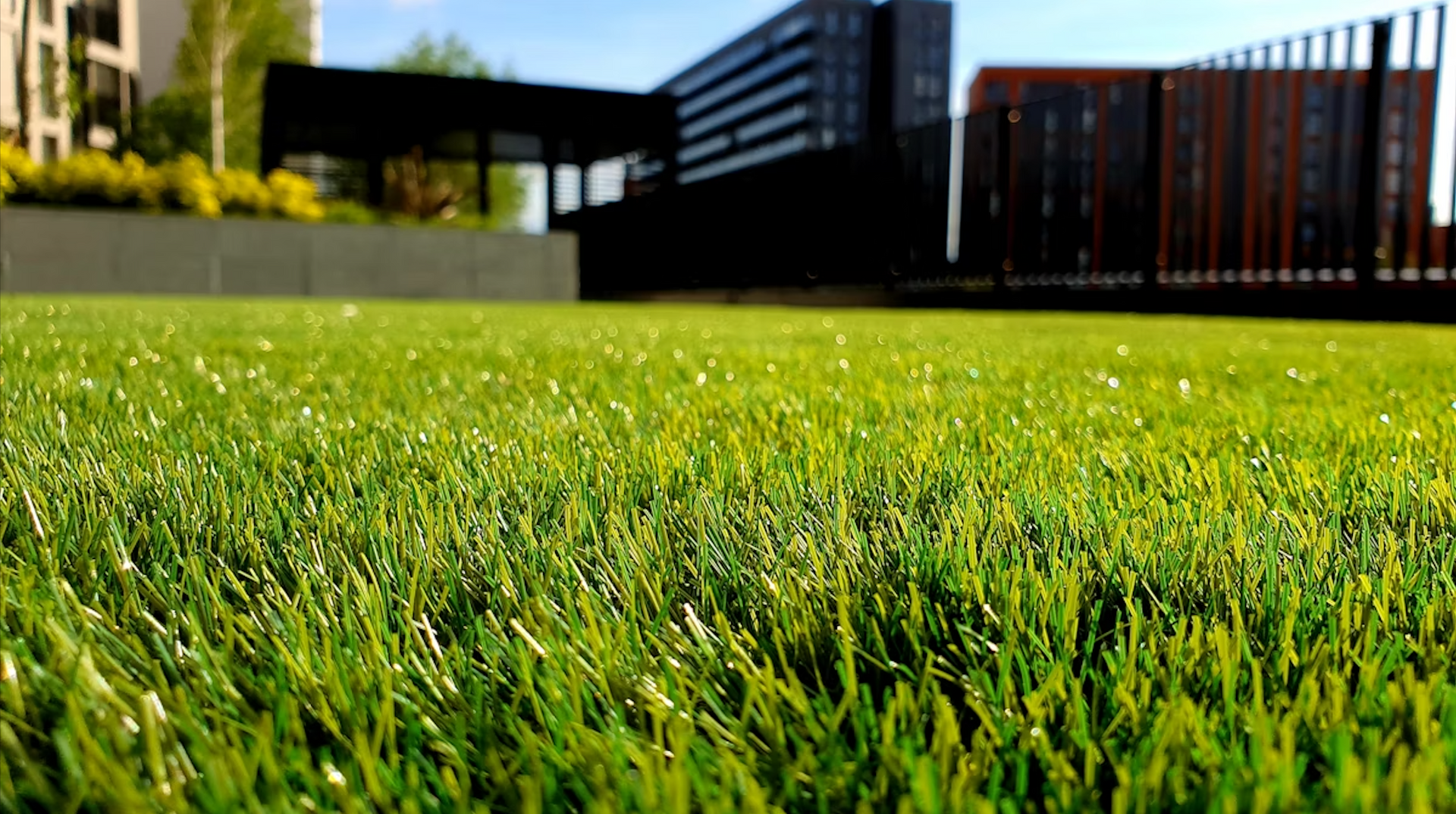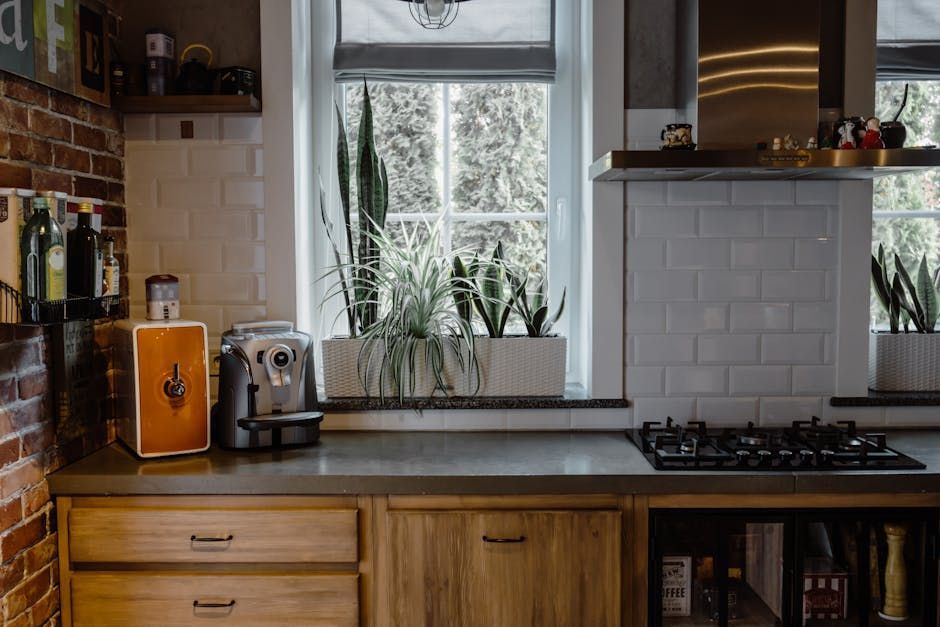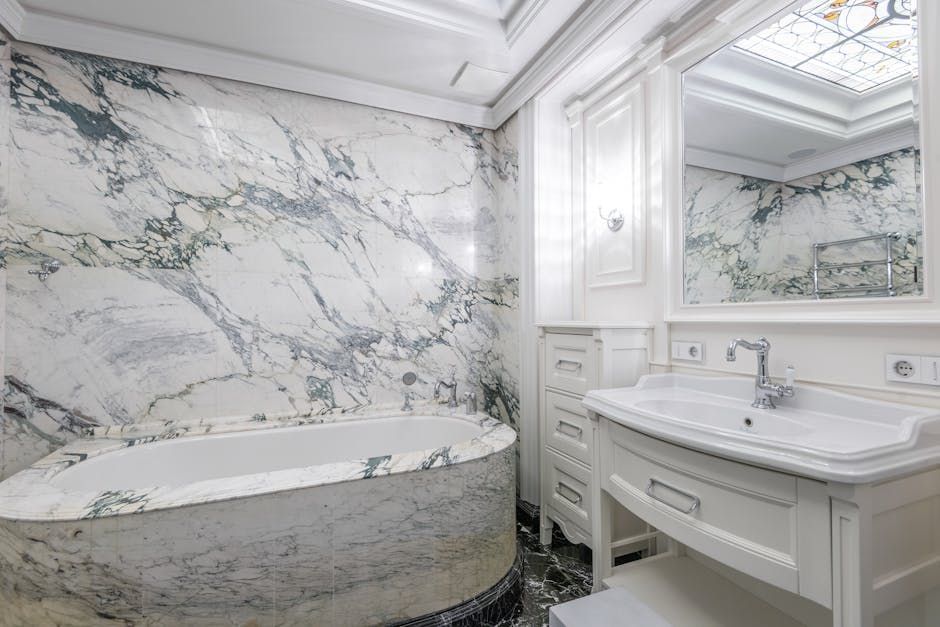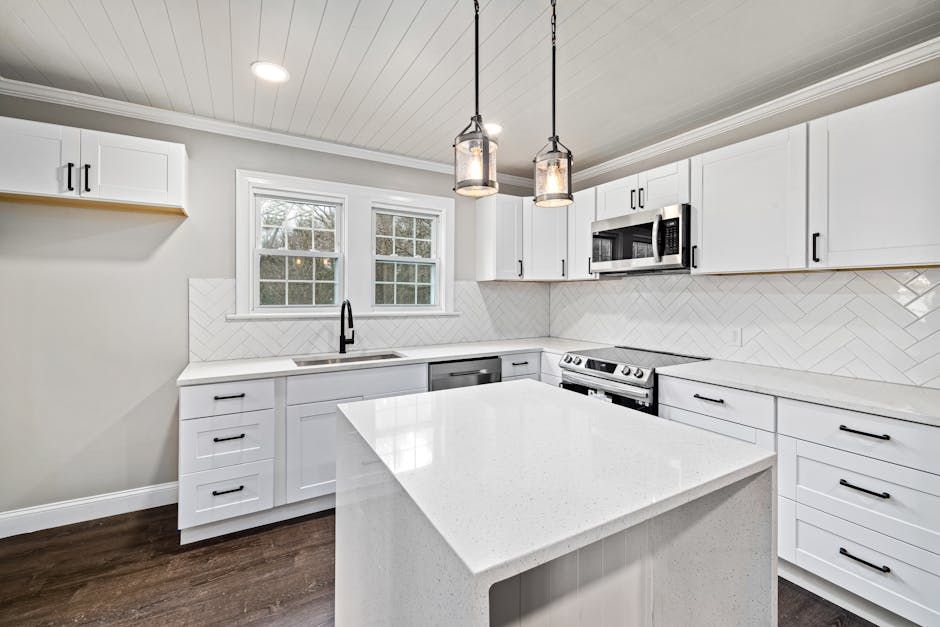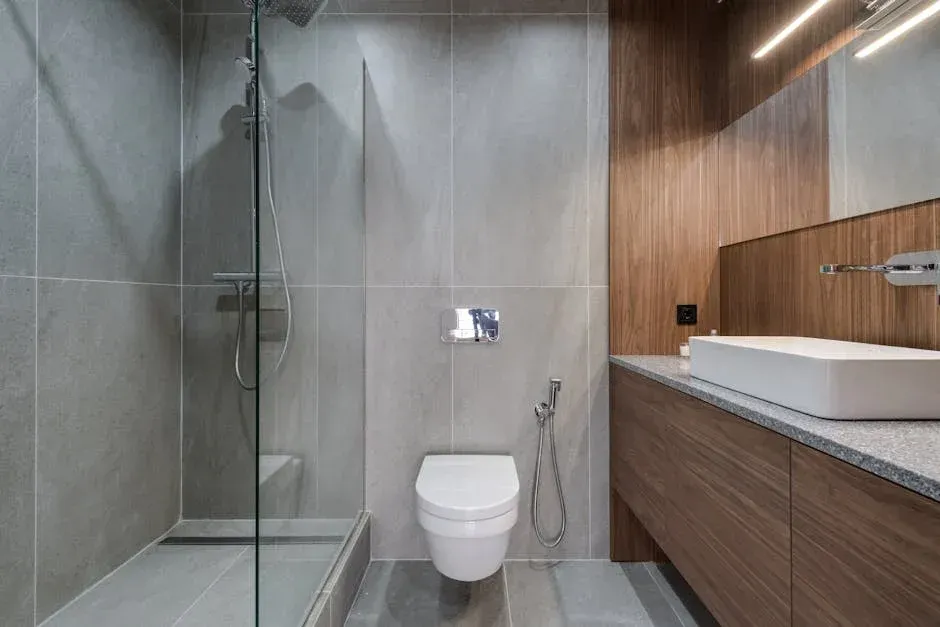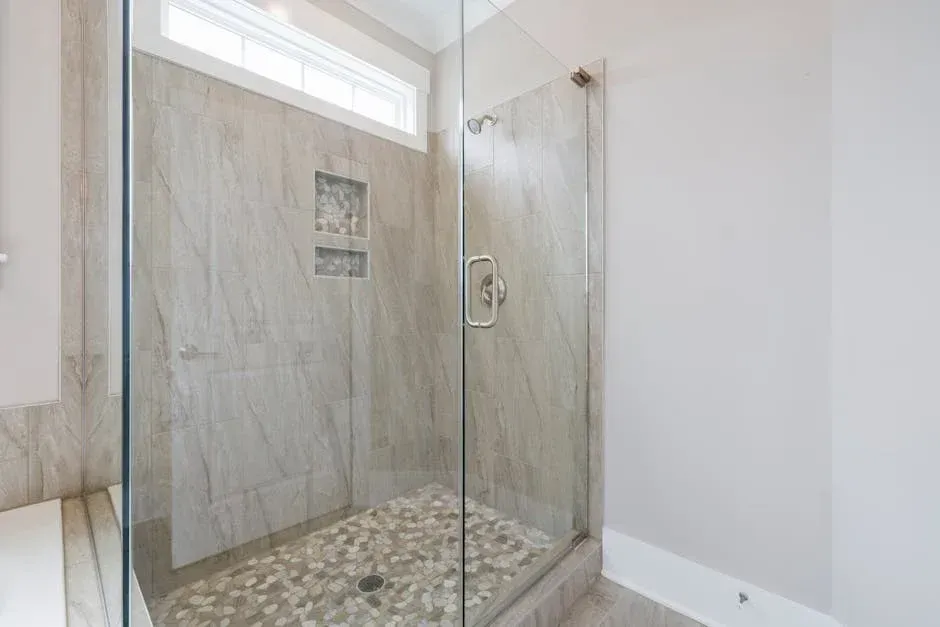Light the Way: Sustainable Lighting Solutions for Every Home
Energy-efficient lighting solutions are at the forefront of creating homes that are both eco-friendly and cost-effective. Where sustainability is key, choosing the right lighting can significantly reduce energy consumption and your electricity bill. Here are quick solutions for those searching for energy-efficient options:
- LED Bulbs: Use up to 90% less energy than traditional incandescent bulbs.
- CFL Bulbs: Can save up to 80% in energy consumption, lasting much longer than their outdated counterparts.
- Solar-powered Lights: Ideal for outdoor spaces, these lights harness solar energy to illuminate your house and garden.
- Smart Lighting Systems: Adjust to daylight and user preferences, enhancing savings through automation.
Adopting these methods not only supports environmental efforts but also improves the beauty and functionality of your home.
Incorporating energy-efficient lighting into home remodeling projects offers a path to lower costs and reduced carbon footprints. As Accountable Home Remodeling takes pride in delivering excellent solutions, understanding these lighting options is a vital first step in your journey toward a modern and sustainable home.
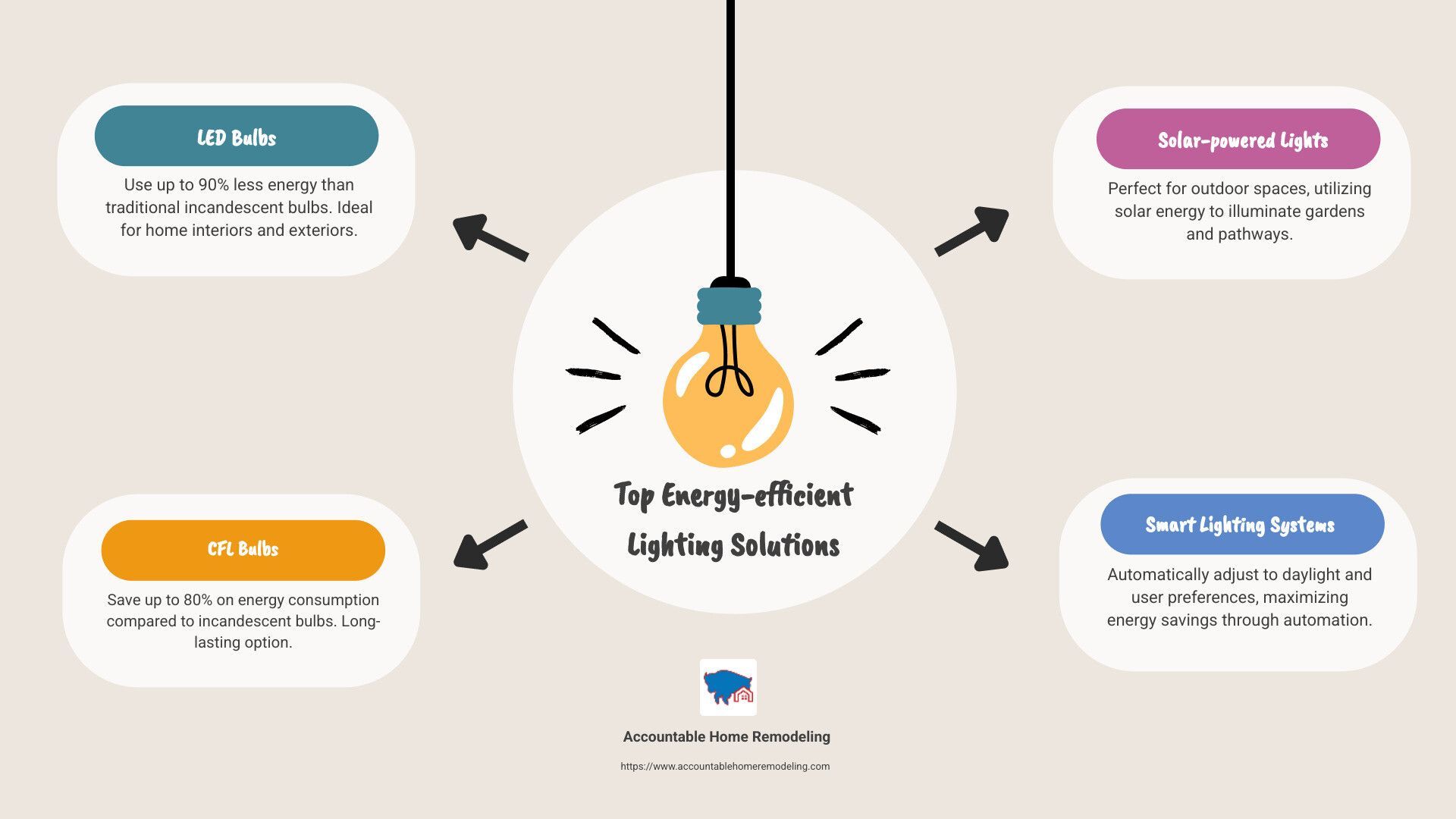
Understanding Energy-efficient Lighting Solutions
When it comes to energy-efficient lighting, two popular options stand out: LEDs and CFLs. These lighting solutions not only help reduce energy consumption but also offer significant cost savings over time.
LEDs: The Future of Lighting
Light Emitting Diodes (LEDs) are the champions of energy efficiency. They use up to 90% less energy than traditional incandescent bulbs and can last up to 25 times longer. This means fewer bulb replacements and lower electricity bills. LEDs are versatile and available in various colors, making them suitable for both indoor and outdoor settings. They are also durable and perform well in cold environments, making them ideal for places like Denver and Boulder.
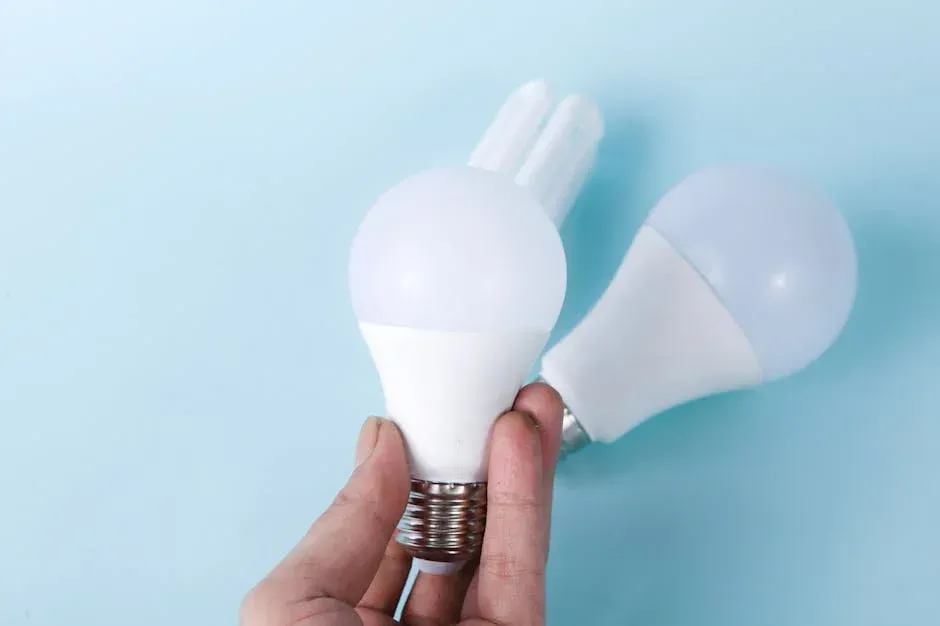
CFLs: Compact and Efficient
Compact Fluorescent Lamps (CFLs) are another excellent choice for reducing energy usage. These bulbs can save up to 80% in energy costs and have a lifespan that outlasts incandescent bulbs by up to ten times. CFLs are perfect for ambient lighting, providing a soft and even glow for larger areas. While they contain a small amount of mercury, proper disposal ensures they remain an eco-friendly option.
ENERGY STAR: A Mark of Quality
When selecting energy-efficient lighting, look for the ENERGY STAR label. This certification signifies that the product meets strict energy efficiency guidelines set by the U.S. Environmental Protection Agency. ENERGY STAR-rated products guarantee high quality and performance, ensuring you get the most savings and the least environmental impact.
By choosing ENERGY STAR-certified LEDs and CFLs, you can be confident in your decision to make your home more sustainable. These lighting solutions not only reduce energy consumption but also contribute to a greener planet.
Incorporating energy-efficient lighting solutions into your home is a smart move, both for your wallet and the environment. Next, we'll explore the benefits of switching to these solutions, highlighting the cost savings and long lifespan they offer.
Benefits of Switching to Energy-efficient Lighting
Switching to energy-efficient lighting solutions offers numerous advantages that can make a big difference in your home and budget. Let's explore the key benefits:
Cost Savings
One of the most appealing benefits of energy-efficient lighting is the cost savings. By replacing incandescent bulbs with LEDs or CFLs, the average household can save about $225 per year on electricity bills. This is because these bulbs use significantly less energy, meaning lower utility costs over time.
Reduced Energy Consumption
Energy-efficient lighting dramatically reduces energy consumption. For instance, LEDs use up to 90% less energy than traditional incandescent bulbs. This substantial reduction not only lowers your electricity bill but also decreases the demand for fossil fuels, which helps the environment.
Long Lifespan
Longer-lasting bulbs mean fewer replacements and less waste. LEDs can last up to 25 times longer than incandescent bulbs, while CFLs can last up to ten times longer. This extended lifespan means less hassle and more savings in the long run, as you won't need to buy replacements as often.
Environmental Impact
By reducing energy consumption, energy-efficient lighting also lessens your carbon footprint. The U.S. Environmental Protection Agency estimates that widespread use of LEDs could save about 88 terawatt-hours of electricity by 2030, equivalent to powering seven million homes for an entire year. This means less CO2 emissions and a healthier planet.
Switching to energy-efficient lighting is a simple step that can lead to significant savings and environmental benefits. Up next, we'll explore the top energy-efficient lighting options for your home, helping you choose the best solutions to illuminate your space effectively.
Top Energy-efficient Lighting Options for Your Home
When it comes to brightening up your home, energy-efficient lighting solutions are the way to go. Let's explore some of the best options available:
LED Bulbs
LEDs, or Light Emitting Diodes, are the champions of energy efficiency. They use up to 90% less energy and last up to 25 times longer than traditional incandescent bulbs. This means they save money and reduce the hassle of frequent replacements. LEDs are available in various styles and colors, making them perfect for any room in your home. Plus, their prices have dropped significantly, making them more accessible.
Real-life example: A family in Longmont, CO, switched their entire home to LED lighting and reported saving over $200 annually on their electricity bills. They also appreciated the variety of light colors available, which allowed them to customize the ambiance of each room.
CFL Bulbs
CFLs, or Compact Fluorescent Lamps, are another excellent option. They can save up to 80% on energy compared to incandescent bulbs and last up to ten times longer. CFLs are great for ambient lighting, providing a soft, even glow. While they contain a small amount of mercury, proper disposal and recycling can mitigate environmental impact.
Interesting fact: CFLs have been a popular choice for those looking to transition from incandescent bulbs, offering substantial energy savings and a longer lifespan.
Smart Lighting
For those who love tech-savvy solutions, smart lighting is a great choice. These systems use sensors and automation to adjust lighting based on your preferences and daylight availability. Smart lights can be controlled via smartphone apps, making it easy to turn lights on or off remotely, change colors, or dim them. Energy savings can reach up to 35% compared to conventional lighting.
Case study: In Denver, a homeowner integrated smart lighting with their home automation system. They enjoyed not only energy savings but also the convenience of controlling their lights with voice commands through their smart speaker.
Solar-powered Lighting
Using the power of the sun, solar-powered lights are perfect for outdoor spaces. They are ideal for pathways, gardens, and patios, providing sustainable lighting without adding to your electricity bill. Solar lights charge during the day and illuminate your outdoor areas at night, offering an eco-friendly solution that reduces reliance on fossil fuels.
Environmental impact: By using solar-powered lights, homeowners contribute to a cleaner environment by reducing carbon emissions and decreasing the demand for non-renewable energy sources.
Choosing the right energy-efficient lighting option for your home depends on your specific needs and preferences. Whether you opt for LEDs, CFLs, smart lighting, or solar-powered options, each choice offers unique benefits that can improve your home's lighting while saving energy and money.
Next, we'll guide you through designing an energy-efficient lighting plan that maximizes indoor and outdoor illumination while keeping costs down.
Designing an Energy-efficient Lighting Plan
Creating an energy-efficient lighting plan involves smart choices for both indoor and outdoor spaces. Let's explore how you can design a lighting setup that saves energy and improves your home's beauty.
Indoor Lighting Design
- Maximize Daylighting: Use natural light to your advantage. Large windows and skylights can flood your home with sunlight, reducing the need for artificial lighting during the day. Lighter wall colors can also help reflect natural light, brightening your space.
- Task Lighting: Focus on specific areas where you need more light, like kitchen counters or reading nooks. This reduces the need for bright overhead lights throughout the room. Use LED task lights to save energy.
- Smart Controls: Incorporate timers, dimmers, and smart systems to control when and how much light you use. For example, occupancy sensors can automatically turn lights off when a room is empty.
- Energy-efficient Fixtures: Choose fixtures that are ENERGY STAR rated. They use less energy and last longer, reducing replacement costs and waste.
Outdoor Lighting Design
- Purpose-driven Lighting: Identify the purpose of your outdoor lighting—whether it's for security, aesthetics, or utility. This helps in choosing the right type and intensity of light.
- LED Flood Lights: Use LED flood lights with motion and photosensors for security lighting. They only turn on when needed, saving energy and reducing light pollution.
- Solar-powered Options: Consider solar lights for pathways, gardens, and patios. They are cost-effective and eco-friendly, as they store solar energy during the day and light up your outdoor spaces at night.
- Directional Lighting: Ensure outdoor fixtures have reflectors or covers to focus light where it's needed. This reduces wasted light and minimizes glare.
Daylighting
Integrating daylighting into your home is an effective way to cut down on artificial lighting needs. Here’s how you can make the most of it:
- Window Placement: Strategically place windows to capture the maximum amount of natural light. South-facing windows are ideal for consistent daylight.
- Light Shelves: Install light shelves above windows to reflect sunlight deeper into the room, reducing the need for additional lighting.
- Skylights and Tubular Daylighting Devices: These can bring natural light into areas that standard windows can't reach, like interior rooms or hallways.
By thoughtfully designing your lighting plan, you can enjoy a well-lit home that’s both cost-effective and environmentally friendly. Next, we'll tackle some common questions about energy-efficient lighting solutions to help you make informed decisions.
Frequently Asked Questions about Energy-efficient Lighting Solutions
What is the most energy-efficient lighting option?
When it comes to energy-efficient lighting solutions, LEDs (Light-emitting diodes) take the crown. LEDs are highly efficient, using up to 80% less energy than traditional incandescent bulbs. They also last significantly longer, which means fewer replacements and less waste. According to research, switching to LEDs can save homeowners a substantial amount on energy bills over time.
How can we be more energy-efficient with lighting?
Becoming more energy-efficient with your lighting doesn't have to be complicated. Here are some simple steps:
- Use Timers and Dimmers: These devices allow you to control when and how much light is used. Timers can turn lights off automatically when they're not needed, while dimmers let you adjust the light level to suit your needs, saving energy.
- Maximize Natural Light: Take advantage of natural daylight by opening curtains and blinds during the day. This reduces the need for artificial lighting and can significantly lower energy consumption.
- Install Smart Lighting Systems: These systems can adjust lighting based on occupancy or the time of day, ensuring lights are only on when necessary. Smart lighting can cut energy usage by up to 35% compared to conventional lighting systems.
What are eco-friendly lighting solutions?
Eco-friendly lighting solutions not only save energy but also reduce the demand for fossil fuels. Here are a couple of options:
- LEDs and CFLs (Compact Fluorescent Lamps): Both are great choices for reducing energy use and minimizing environmental impact. LEDs, in particular, are mercury-free and have a smaller carbon footprint compared to CFLs.
- Solar-powered Lighting: This is an excellent option for outdoor spaces. Solar lights harness sunlight to power your lighting needs at night, offering a sustainable and renewable energy source.
By incorporating these energy-efficient practices and solutions, you can make a significant impact on your energy consumption and contribute to a more sustainable future. Stay tuned as we continue to explore more about energy-efficient lighting solutions.
Conclusion
At Accountable Home Remodeling, we believe that every home deserves lighting that is not only beautiful but also energy-efficient. Our commitment to quality, transparent communication, and personalized designs ensures that your remodeling experience is seamless and rewarding.
Switching to energy-efficient lighting solutions is a smart choice for any homeowner. By choosing options like LEDs and smart lighting systems, you can enjoy significant cost savings and reduce your energy consumption. These choices not only benefit your wallet but also contribute to a healthier planet by reducing carbon emissions.
Our team is dedicated to helping you create a lighting plan that meets your needs while prioritizing sustainability. Whether you're looking to update your kitchen, transform your bathroom, or undertake a full-home renovation, we are here to guide you every step of the way.
Explore our services to see how we can bring your vision to life with our expert remodeling solutions. Let us help you light the way to a more energy-efficient and stylish home.

